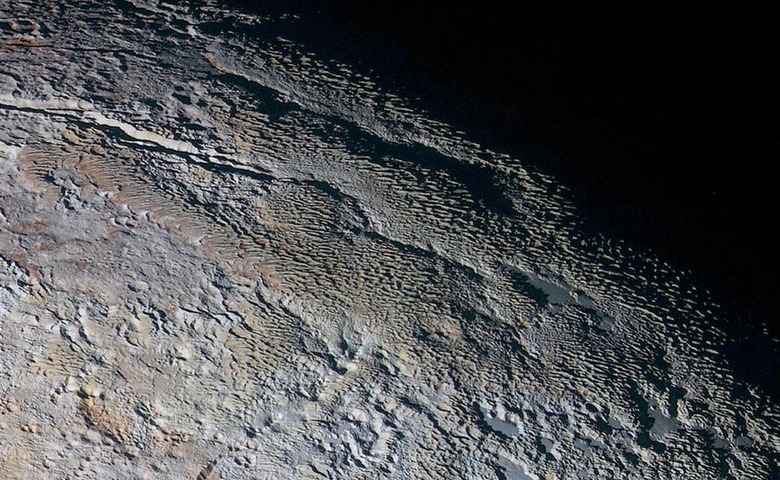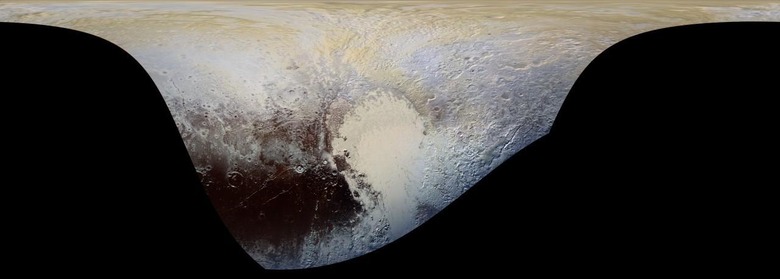New Pluto photos are strangest yet: "Snakeskin" topography
A set of photos released by NASA today shows off a piece of landscape that looks like snakeskin, hundreds of miles long. "[This new landscape] looks more like tree bark or dragon scales than geology," said William McKinnon, New Horizons Geology, Geophysics and Imaging (GGI) team deputy lead from Washington University in St. Louis. "Maybe it's some combination of internal tectonic forces and ice sublimation driven by Pluto's faint sunlight... This'll really take time to figure out."
This is just the latest image to have reached Earth – just this week – after being sent from the New Horizons craft. That mission had its point of closest approach back in July – so why are we just getting some photos now? Because they're still being sent!
Data is still being processed by the machine and only so much data can be sent at a time. Sent back over a distance of over 4-billion miles through space, the data we're receiving has been being beamed for months on end.
Now we're about to see the really good stuff! Tap any of the images you see here to see their full-sized versions, fully suitable for wallpaper usage.
The image you see above shows a view roughly 330 miles (530 kilometers) across. This image shows a set of mountains called the Tartarus Dorsa, and is an extended color image, meaning it combines blue, red and infrared images taken by the Ralph/Multispectral Visual Imaging Camera (MVIC).
Next you're seeing a "cylindrical projection map" of Pluto. This is the "most detailed color map of Pluto ever made." This photo was captured with the Ralph camera aboard New Horizons and the NASA's spacecraft's Long Range Reconnaissance Imager (LORRI).
The last image you're seeing here was captured by New Horizons just before closest approach on July 14th, 2015. This image shows "features as small as 270 yards (250 meters) across", and includes the basin known as Sputnik Planum.
Have a peek at the timeline below for continued peeks at the surface of Pluto, and stay tuned to our Space tag portal for more!
VIA: NASA



